Neptune
Picture credits

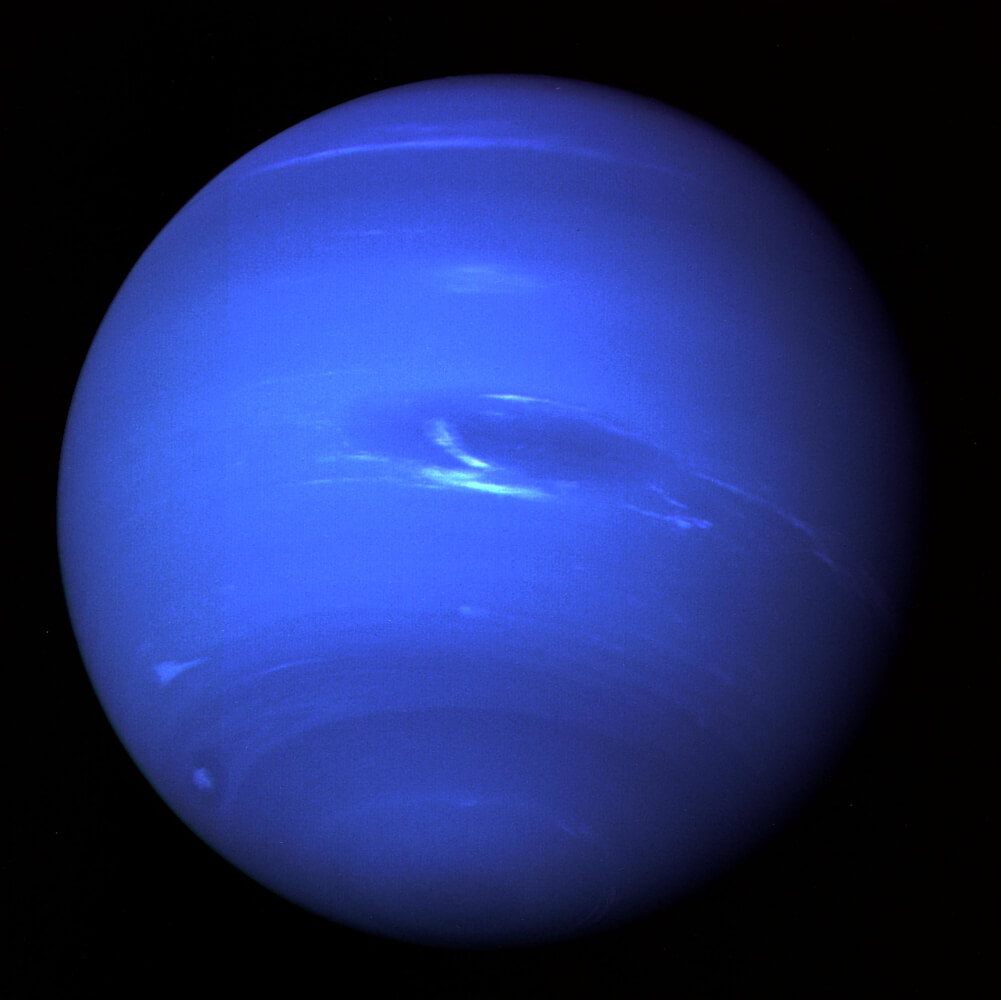
It is dark and cold on Neptune. In addition, Neptune has winds with speeds of over 2400 km/h, which whip clouds of frozen methane across the planet. It is the outermost planet in the Solar System and the only one invisible to the naked eye, which is why it was mathematically predicted before its discovery.
Just like Uranus, Neptune is called an ice giant because it is made up of the “planetary ices” water, ammonia and methane. Fittingly, it is also sometimes very cold on Neptune: in the uppermost cloud layer, temperatures can drop to -220 degrees Celsius, which is only about 50 degrees above absolute zero. In the planet’s interior, however, temperatures of several thousand degrees Celsius prevail.
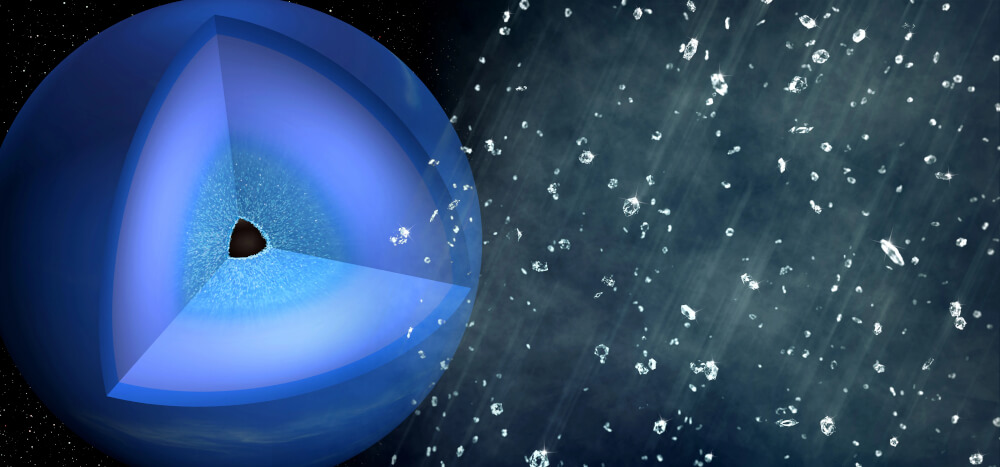
The layer above the rocky core probably consists of water, ammonia and methane. A methane molecule consists of hydrogen and carbon. However, under the extreme pressure and temperature conditions deep inside the planet, this molecule breaks into hydrogen and carbon atoms.
The carbon atoms form a diamond structure due to the extreme pressure conditions. These clumps of carbon are denser than the surrounding material, so they sink deeper into the planet: it rains diamonds.
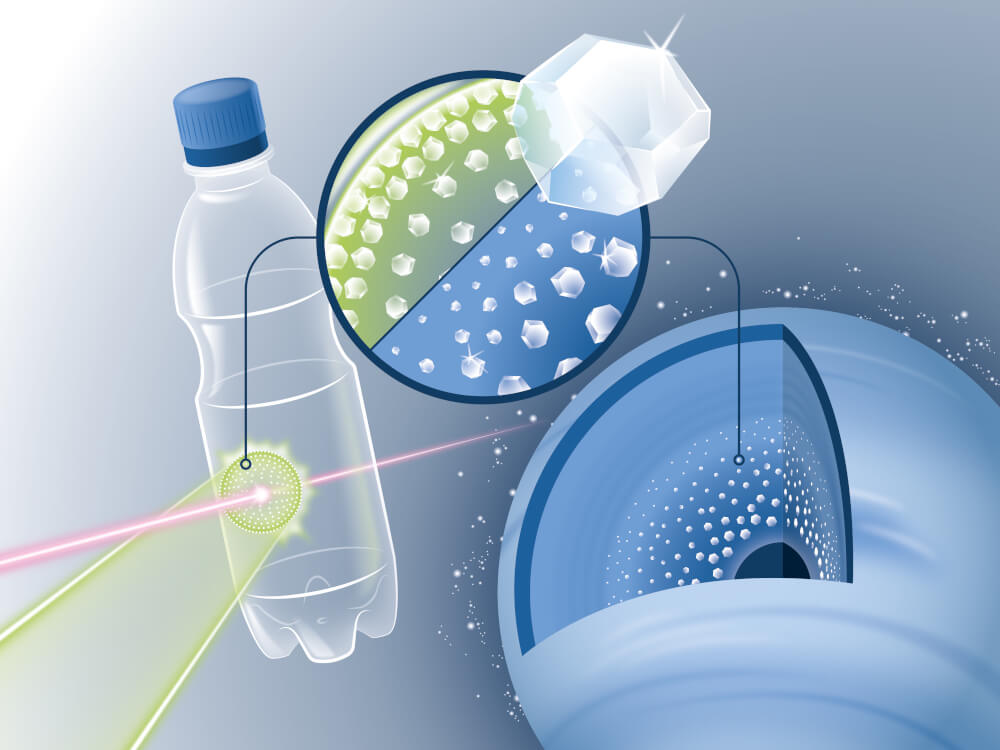
The diamonds in Neptune form at such high pressures that humans are unable to dive into the planet and harvest them. But we can recreate the extreme temperature and pressure conditions in laboratories by shooting plastic films (which consist of long chains of carbon and hydrogen, i.e. hydrocarbons) with high-intensity lasers. In the process, we can observe the formation of nanometre-sized diamonds. At the University of Rostock, more complex compounds are now also being studied, such as PET, which is known from plastic bottles and which contains oxygen in addition to carbon and hydrogen. This brings us one step closer to a realistic replica of Neptune’s interior.
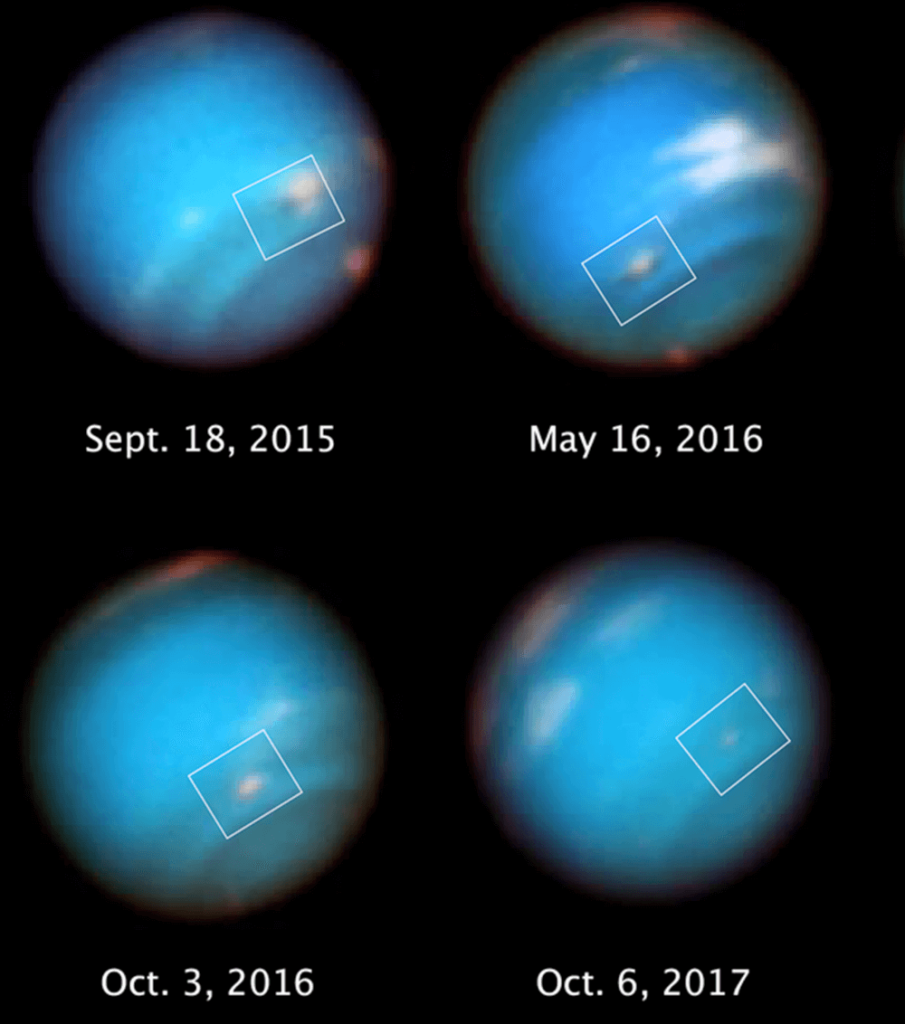
Since we have had space telescopes, a number of giant storms have been recorded on Neptune, and in some cases their formation, evolution and ending. For example, the Hubble telescope recorded the progress of a giant storm over two years, during which time it shrank from 5000 km to 3700 km. Neptune’s large dark spot is a storm as well.
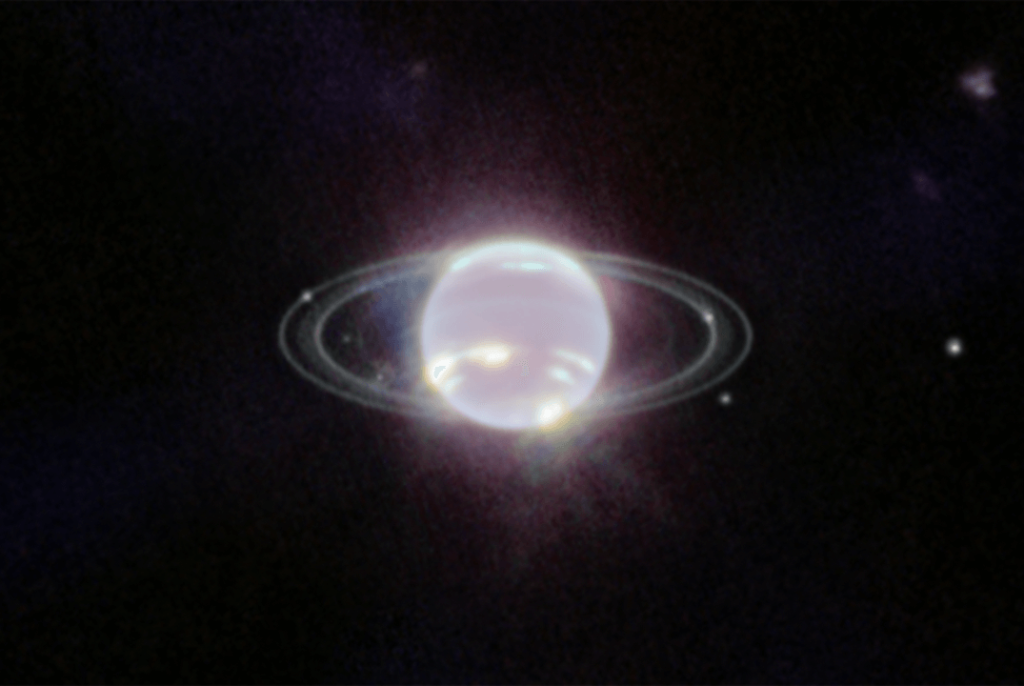
On 21 September 2022, the James Webb Space Telescope took the clearest images yet of Neptune’s rings in the last 30 years. The infrared telescope photographed several bright thin rings as well as the planet’s fainter dust rings. The Voyager 2 spacecraft had detected several of these rings during its flyby in 1989, but this image is the first in the infrared range.
The rings are believed to be the result of a collision between some of Neptune’s original moons.

Audio guide
(available soon)
PhD students from the Institute of Physics at the University of Rostock give exciting insights into their research and explain the universe.
Quiz
Inside Neptune there is a pressure of 1,500,000 bar. How many elephants would have to balance on a stamp at the same time to reach this pressure?
